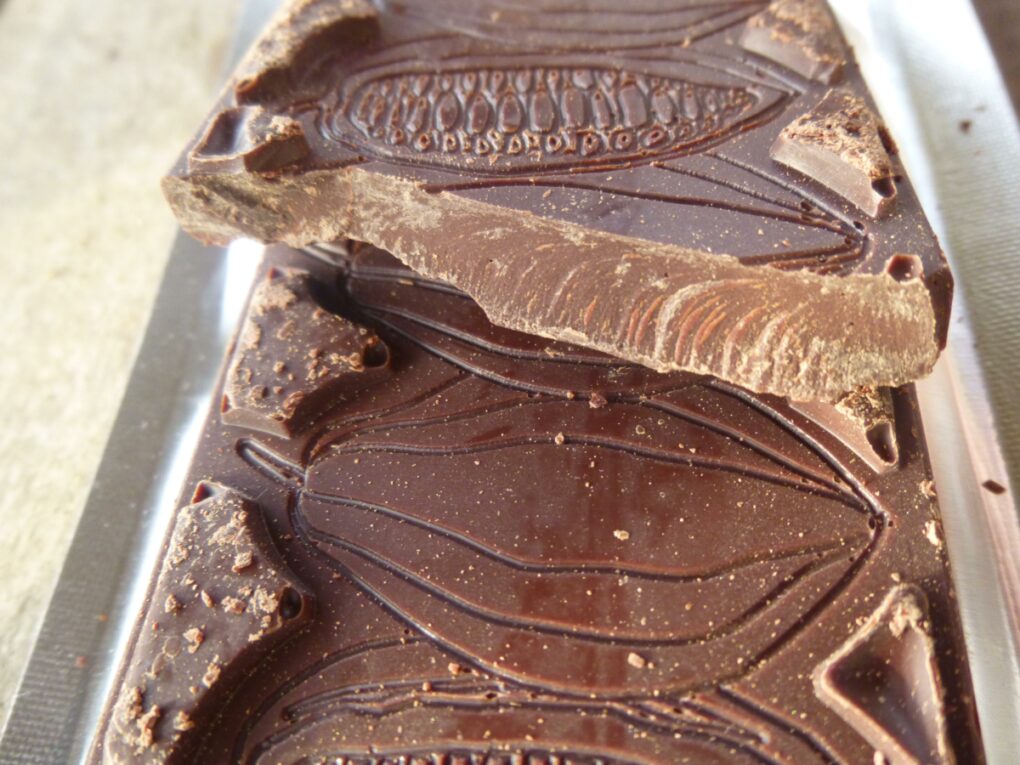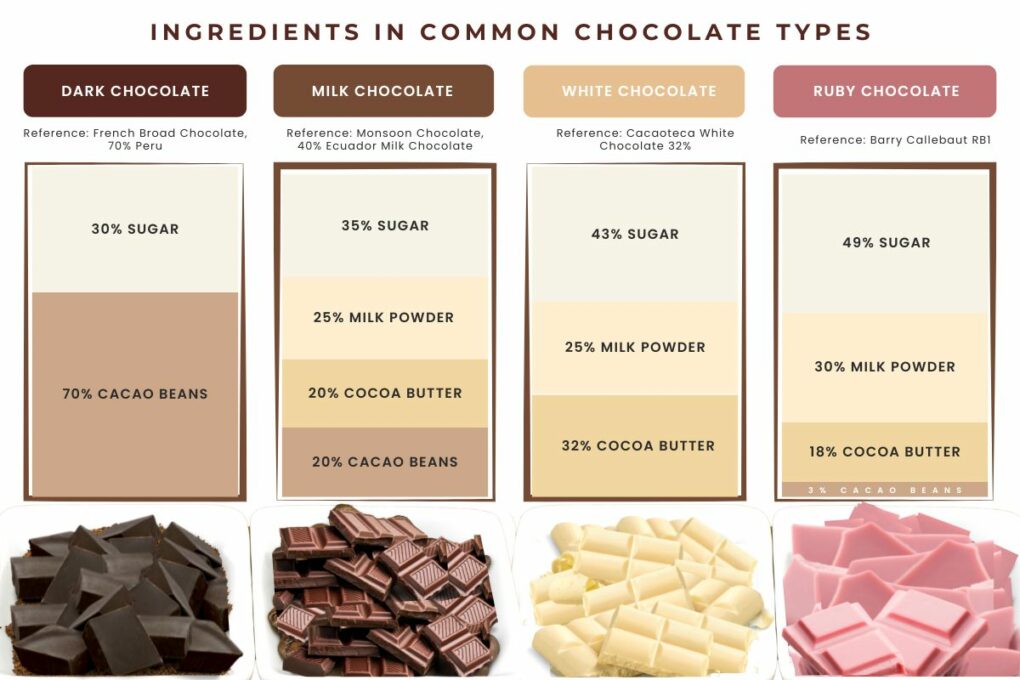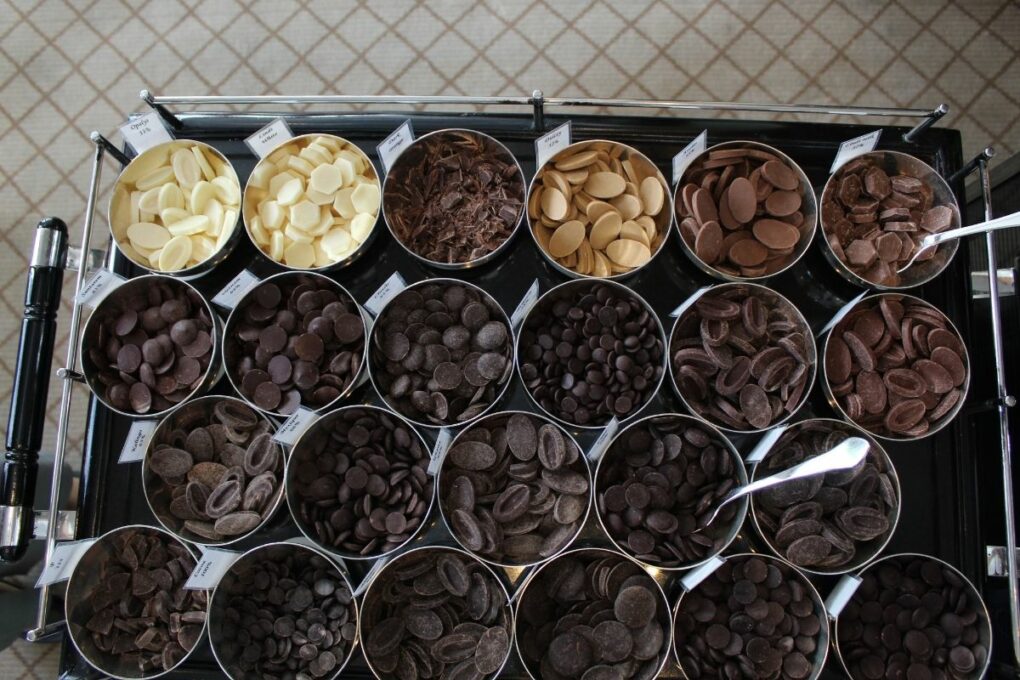You may have noticed from sampling what the chocolate world has to offer that some of these confectionery delights tend to have a more bitter taste than others. But why exactly is this the case? What makes chocolate so bitter in some cases and more mild in others?
Understanding the factors that contribute to bitterness in chocolate can help you appreciate the various flavors and complexities of your favorite sweet treat. The bitterness of chocolate primarily comes from the cacao beans it's made from, more specifically the alkaloids present in the cacao solids.
Cacao is an agricultural product, meaning that factors such as genetics, fermentation, and roasting all impact the chocolate's flavor profile. Different varieties of cacao beans can produce different levels of bitterness, just like how Granny Smith apples are more acidic than Gala apples.
When exploring different chocolate types, always keep in mind that the percentage of cocoa solids plays a significant role in determining the intensity of the bitter taste. Each type of chocolate varies in bitterness and intensity of flavor, as you'll soon find out.

Jump To
Types of Chocolate
Dark Chocolate
When you're looking for a rich, intense flavor, dark chocolate is the way to go. This type of chocolate has a higher percentage of cacao, which gives it a deeper flavor profile, usually containing at least 50% chocolate liquor, with some varieties pushing up to 80% or higher.
Bittersweet and semisweet chocolates are both types of dark chocolate, but they differ in their cacao content. Bittersweet chocolate usually contains around 70% cacao, while semisweet chocolate ranges from 35% to 55% cacao.
Due to its higher cacao content, bittersweet chocolate has a deeper and more bitter flavor compared to semisweet chocolate, but again, this can vary depending on origin.
Milk Chocolate
Milk chocolate, as the name suggests, is made by adding milk (generally powdered milk) to the chocolate-making process, resulting in a milder, creamier, and sweeter taste compared to dark chocolate. It’s typically made with a lower percentage of cacao, typically around 20-40%, half of which is pure cocoa butter.
While it might not have the same intense flavor as dark chocolate, milk chocolate is still a popular choice for many treats, such as candy bars and truffles.
White Chocolate
Despite its name, white chocolate is often thought to not be real chocolate because it doesn't contain any cocoa solids. Regardless of your opinion, white chocolate is made from cocoa butter, sugar, milk solids, and sometimes vanilla. This gives it a pale, ivory appearance and a delicate, sweet taste.
White chocolate should never be bitter, because it doesn't contain the cacao solids which contain those bitter-tasting alkaloids. Examining ingredients ensures you’re getting the flavor and quality you desire.

Bitterness in Chocolate
Cocoa Beans and Bitterness
It all starts with the cocoa beans when it comes to bitterness in chocolate. These beans, commonly known as cacao beans, are the seeds of the cacao plant. Just like different varieties of wine grapes have different levels of acidity, cocoa beans can have varying levels of bitterness due to genetics, fermentation, and roasting choices.
You'll find that not all cocoa beans are equal, and their chemical composition will have a significant impact on the taste of the chocolate.
Flavonoids and Bitter Taste
The presence of flavonoids is also connected to the bitterness level of chocolate. These natural compounds found in cocoa beans have antioxidant properties and provide various health benefits, such as reducing blood pressure and improving circulation.
Percentage of Cocoa
Another factor influencing the bitterness of chocolate is the percentage of cocoa (which includes cocoa butter & cocoa solids). Dark chocolate, for example, contains at least 50% cocoa. The higher the cocoa percentage, the less sugar there is, meaning a stronger bitter flavor in the chocolate.
You'll often find dark chocolate with 70%, 80%, or even 90% cocoa, offering a progressively more intense and usually bitter flavor. Some cacao origins which tend to be more mild are South American, such as Venezuelan, Colombian, and Ecuadorian cacaos.
The overall bitterness in chocolate arises from a combination of the cocoa beans' properties, the presence of flavonoids, and the percentage of cocoa in the final product.

Chocolate Ingredients and Additives
Cocoa Powder
Cocoa powder is derived from cacao beans and plays a significant role in determining the chocolate's flavor. Different cacao beans may have more or less residual cocoa butter, and various taste profiles; therefore, some cocoa powders may be more bitter than others.
Additionally, fermentation can affect the cocoa powder's bitterness, as well-fermented cocoa powder provides a rich and complex taste. Improper fermentation, on the other hand, may result in the development of mold and slatiness, negatively impacting the chocolate's flavor.
Cocoa Butter
Cocoa butter adds a smooth, creamy texture to the chocolate. The amount of cocoa butter used in chocolate can also influence bitterness. Higher cocoa percentages often mean less added sugar, making the chocolate taste more intense and bitter, though also smoothing out the flavor of the cocoa solids.
If you find dark chocolate too bitter for your taste, you can try adding some sugar to it. By doing so, you can balance out the bitterness without compromising the rich flavors of cocoa.
Lecithin
Lecithin is an emulsifier commonly added to chocolate to improve its texture and prevent separation, generally replacing some portion of the cocoa butter in industrial chocolate making. While lecithin itself doesn't contribute to the bitterness or sweetness, it helps hold the other ingredients together, ensuring that the flavors are more evenly distributed.
Any given chocolate's bitterness is mainly due to its cocoa powder content, which can vary depending on the cacao beans' genetics and fermentation process. Other ingredients, such as sugar and cocoa butter, play a major role in balancing the taste and bitterness of the final product.

Pairing Chocolate with Foods and Beverages
Chocolate and Fruit
One of the most classic pairings is chocolate with fruit. When it comes to pairing fruits with chocolate, you can't go wrong with berries like strawberries, raspberries, cherries, and blackberries.
These less-sweet fruits enhance the flavors of chocolate and provide a refreshing contrast to dark chocolate's bitterness. Citrus fruits like oranges and lemon (try candied lemon) also make for interesting combinations with dark chocolate.
You can even get a bit adventurous by pairing chocolate with tropical fruits such as mangoes, pineapples, and bananas. Another delightful pairing option is dried fruits such as raisins, fig desserts, or apricots either fresh or dried.
Chocolate and Wine
Pairing chocolate with wine can be an enjoyable experience if you consider the intensity of the flavors. It's important to match the boldness of your chocolate with the wine. For instance, dark chocolate goes well with full-bodied red wines like Cabernet Sauvignon, Zinfandel, or Merlot.
Pairing chocolate and wine should follow the general rule of wine pairings: the darker the chocolate, the darker the wine (in both flavor and color).
Chocolate and Cheese
Chocolate and cheese may not be the first combination that comes to mind, but they can make for a surprisingly delightful pairing. The key is to select cheeses with contrasting flavors so that they complement the chocolate instead of competing with it.
A creamy and mild brie, for example, can go well with rich, dark chocolate. Alternately, try mixing chocolate with blue cheese for a more powerful flavor combination. Blue cheese's strong flavors contrast wonderfully with the harshness of a dark chocolate, though stick to lower percentages.

















Comments
No Comments